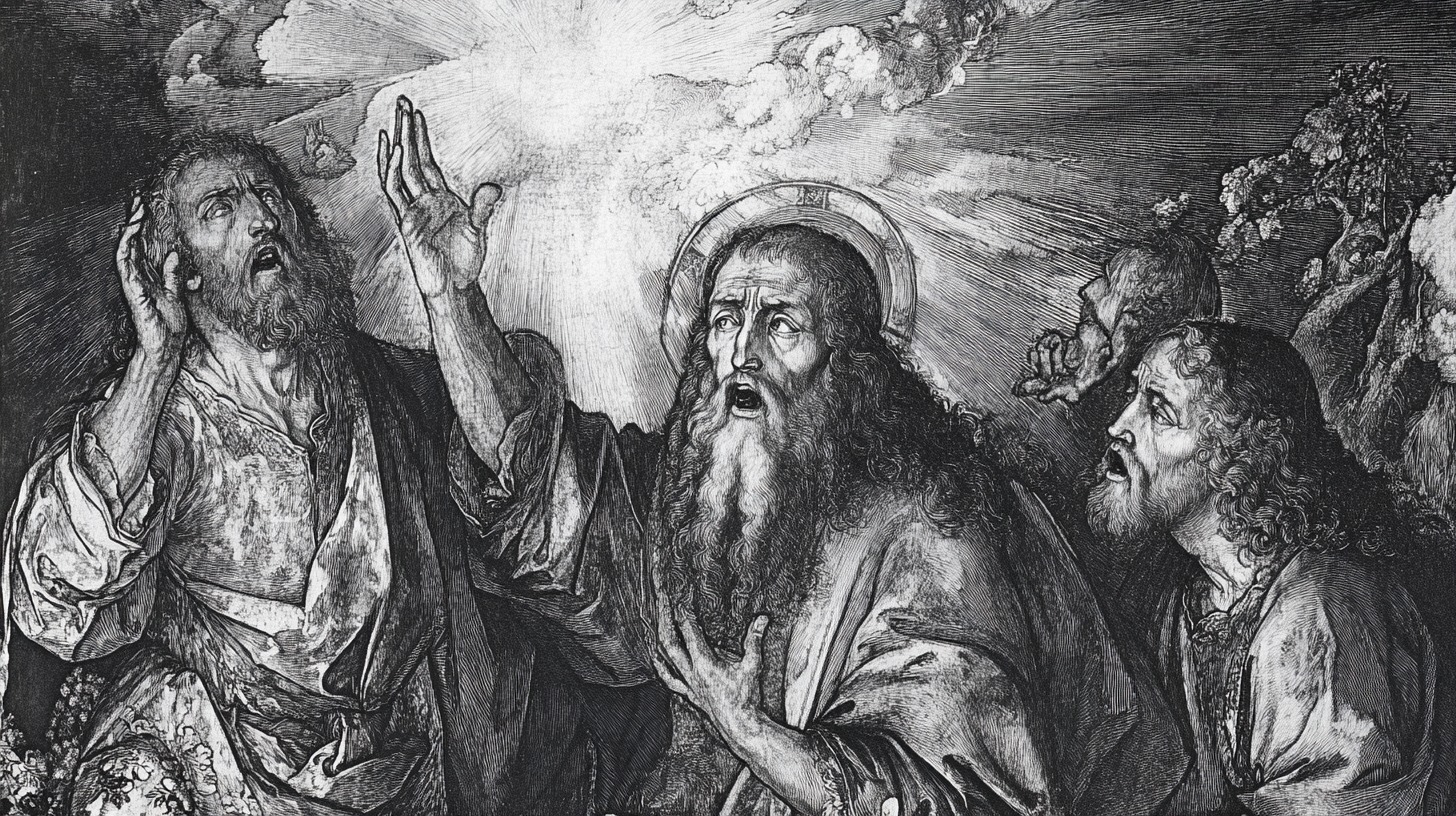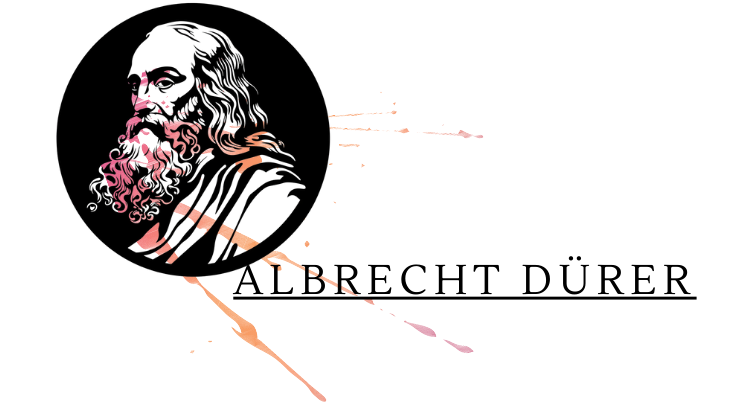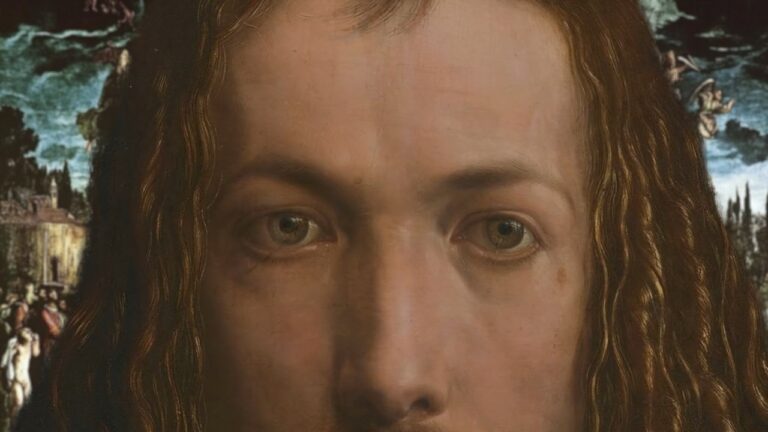Albrecht Dürer significantly impacted European art through his mastery of engraving.
Dürer’s road to mastery started after a 1494 trip to Italy, where he shifted from religious woodcuts to engraving with a burin.
His early engravings, often depicting everyday scenes, lacked the complexity of his later work but displayed bold composition and emerging talent.
Let us talk about his engravings, what influenced them, and how his works influenced later artists.
The Engraving Process and Technical Innovations
Albrecht Dürer’s background in a family of goldsmiths and painters provided a solid foundation for developing his extraordinary engraving skills.
His approach combined his technical training with a profound artistic vision, allowing him to elevate engraving to a fine art form.
The process was labor-intensive and highly detailed, involving multiple steps to achieve his signature depth and contrast.
Cross-Hatching
Dürer’s hallmark cross-hatching technique, with layered, intersecting lines, created realistic shadow and depth, giving his figures a near three-dimensional quality.
The technique remains challenging for modern engravers, as rolled copper plates today lack the smoothness of Dürer’s hammered plates.
By varying line density and direction, Dürer achieved a range of tones across his work, capturing light, shadow, and form with remarkable precision.
Legacy and Replication Challenges
Modern artists, like Andrew Rafferty, have found it difficult to replicate Dürer’s fine lines and tonal depth due to differences in materials.
His innovations in engraving established a standard in art, showcasing the medium’s potential for detail and complexity.
Dürer’s Masterprints of Symbolism and Interpretation
Albrecht Dürer’s three Meisterstiche, or “masterprints,” like Knight, Death and the Devil, Melencolia I, and St. Jerome in his Study, are considered some of his most technically accomplished and symbolically rich works.
Each engraving is layered with intricate symbolism, reflecting distinct human experiences and thoughts.
These masterprints showcase Dürer’s ability to merge technical precision with profound themes, making each piece subject to extensive interpretation.
| Engraving | Description | Symbolic Elements | Interpretation |
|---|---|---|---|
| Knight, Death and the Devil | A knight rides calmly through darkness. | Death with hourglass; Devil nearby. | Symbol of Christian faith and resilience. |
| Melencolia I | A winged figure sits in deep thought. | Tools for intellect; magic square dated 1514. | Reflects the conflict between reason and imagination. |
| St. Jerome in his Study | St. Jerome in peaceful study. | Dog, lion, and skull symbolizing loyalty, protection, and mortality. | Tribute to scholarly and spiritual life. |
Each of these engravings demonstrates Dürer’s mastery of technique and thematic depth.
- Themes of morality
- Intellectual struggle
- Contemplative faith
His use of symbolism and compositional detail makes these works not only visual masterpieces but also profound meditations on human existence and virtue.
Influence of Venetian Art on Dürer
In 1500, Venetian artist Jacopo de’ Barbari visited Nuremberg, introducing Dürer to revolutionary artistic principles from Venice that would have a profound impact on his approach to art.
These concepts, proportion, perspective, and anatomy, transformed Dürer’s style, leading him toward a more intricate, lifelike, and symbolically layered composition in both his paintings and engravings.
His exposure to Venetian art provided a foundation for new creative directions.
Jacopo de’ Barbari’s Influence
- Understanding how to create more lifelike representations by adjusting the relationships between different elements in a figure.
- Using depth and spatial techniques to make scenes more immersive.
- Applying greater anatomical accuracy, leads to more realistic depictions of the human body.
Study in Venice (1505)
Dürer returned to Venice in 1505 for deeper study, immersing himself in the artistic advancements of the Venetian Renaissance.
- Exposure to Venetian masters allowed Dürer to refine his skills and absorb Renaissance ideals, blending them with his Northern European techniques.
- The second visit marked a clear transition in Dürer’s work toward more sophisticated and symbolically complex compositions, integrating his newfound knowledge.
Focus on Engraving (Post-1507)
By 1507, Dürer shifted his focus primarily to engraving, applying the Venetian principles he had mastered.
- His engravings began to exhibit unparalleled technical precision and an increased level of detail.
- Dürer’s engravings took on layered meanings, using symbolism that reflected Renaissance humanist ideals.
- The period saw the creation of his famed Meisterstiche, or master prints, where Dürer’s Venetian-influenced style is fully realized.
Dürer’s exposure to Venetian art and his commitment to studying these advanced techniques were pivotal in his evolution.
His ability to blend Northern European artistry with Italian Renaissance innovations solidified his status as a master engraver, setting a new standard for complexity and depth in European art.
Religious Themes and Humanist Influences

Albrecht Dürer’s work is rich with religious symbolism and humanist ideals, reflecting the spiritual and intellectual climate of his time.
Though he remained a Catholic, there is evidence in his art that he sympathized with the ideas of the Protestant Reformation, which was beginning to reshape the religious landscape of Europe.
His friendships with key reformists, such as Martin Luther, suggest an openness to new theological ideas and an interest in the more personal, individual spirituality that Protestantism promoted.
Religious Engravings
Dürer’s deep engagement with religious themes is evident in his extensive body of work featuring Christian imagery.
- Dürer’s engravings highlighted the humanity of Jesus, resonating with both Catholic and Protestant audiences.
- His engravings emphasized the inner strength of religious figures, reflecting individual spirituality.
- He used symbols to explore themes of sin, virtue, and redemption.
Sympathy for the Reformation
While there is no concrete evidence that Dürer formally aligned himself with Protestantism, his art suggests an appreciation for reformist principles.
His relationship with Martin Luther, whom he admired, influenced his approach to religious themes.
He appeared to value the Reformation’s emphasis on personal faith, interpreting religious figures in ways that highlighted their human qualities rather than distant, idealized forms.
Humanist Influences and Secular Themes
Dürer was also deeply influenced by Renaissance humanism, which emphasized the value of human experience, knowledge, and the exploration of secular themes.
- Dürer’s engravings showed peasants, farmers, and townsfolk with realism and dignity.
- He included figures like Apollo and Diana, reflecting his interest in classical culture.
- Influenced by scholars like Cornelius Agrippa, Dürer explored science, anatomy, and philosophy, as seen in Melencolia I.
Legacy and Influence on European Art
Albrecht Dürer’s impact on European art is both profound and enduring, shaping the course of Renaissance art and influencing generations across Europe.
His pioneering use of printmaking as a means of artistic expression made high-quality art more accessible than ever before, helping to democratize art and broaden its audience.
Through his engravings, theoretical writings, and mastery of various artistic techniques, Dürer set new standards that inspired his contemporaries and future generations.
Democratization of Art Through Printmaking
Dürer’s engravings and woodcuts allowed art to reach people far beyond the traditional elite.
Until then, access to quality art had been largely restricted to the wealthy who could afford original paintings or commissions.
- Prints could be produced in multiples, making them more affordable and accessible to a wider audience. His prints circulated throughout Europe, reaching both urban and rural populations.
- Dürer’s prints introduced sophisticated, high-quality art to people who might not have otherwise encountered such work, helping to establish a larger public appreciation for Renaissance art and ideas.
Influence on Major Renaissance Artists
Dürer’s techniques and compositions were highly influential among his contemporaries, especially artists in Italy, where his work found a receptive audience.
- Inspired by Dürer’s success, artists like Raphael began collaborating with printmakers to reproduce their work, thus expanding their reach and influence.
- Dürer’s visits to Italy introduced Northern European techniques to Italian art, while his work absorbed elements of Italian Renaissance ideals, such as proportion and perspective.
The exchange enriched both art traditions, creating a more unified Renaissance style across Europe.

Theoretical Works and Accessibility of Knowledge
- Anatomy
- Perspective
- Geometry
These texts, written in German rather than Latin, were groundbreaking in making complex ideas accessible to a broader audience:
- Dürer’s studies became foundational for artists’ understanding of the human form.
- His perspective techniques offered practical methods for depth and form, accessible to a broader audience.
- Dürer’s writings became key references, supporting accessible art education.
Enduring Legacy and Cultural Impact
Dürer’s influence extended beyond technical artistry and into the cultural fabric of Europe.
- Dürer’s work combined spiritual and intellectual ideas, bridging religious devotion with humanist values.
- Artists across Europe studied and emulated Dürer’s techniques and themes, making him a central figure in European art’s development.
Summing Up
Albrecht Dürer’s work in engravings, woodcuts, paintings, and watercolors combines Northern European artistry with Italian Renaissance techniques.
His Apocalypse series and engravings like Melencolia I highlight his skill in landscape art, etching, and engraving.
Dürer’s techniques set a standard in engraving and inspired artists across Europe, creating a legacy still celebrated and studied today.

